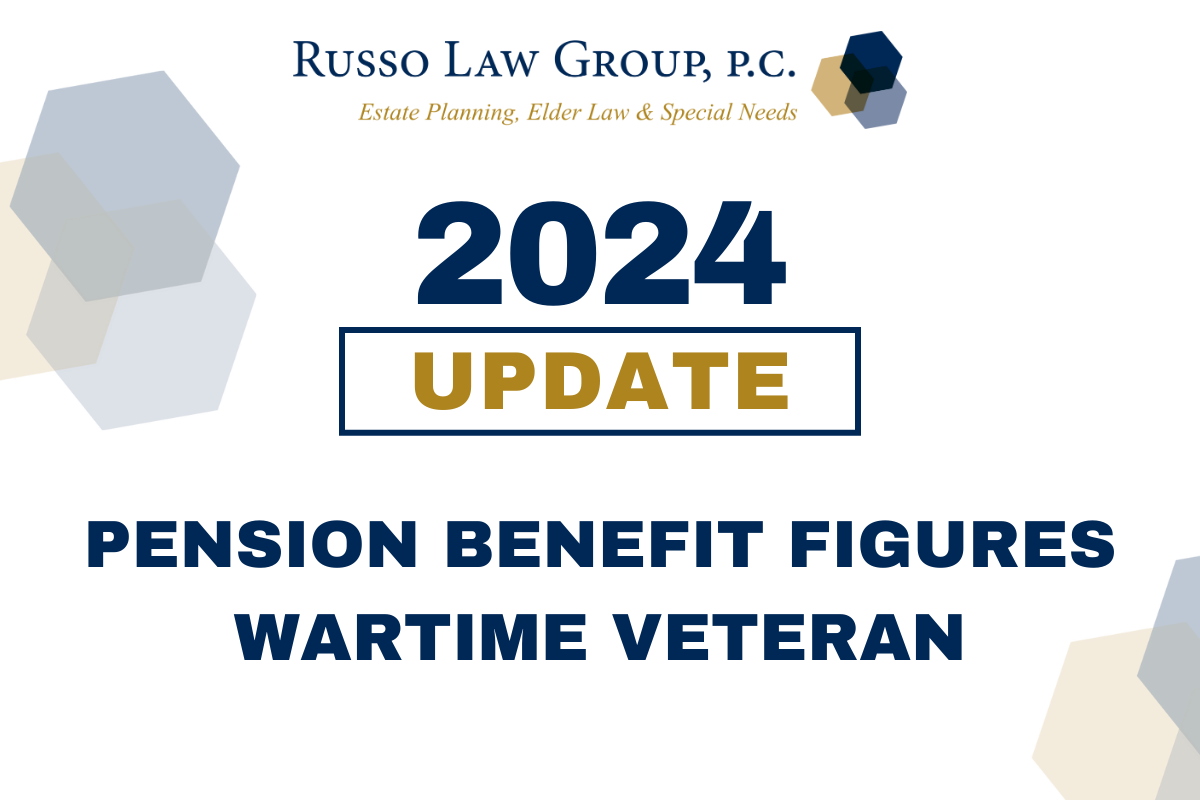2024 PENSION BENEFIT FIGURES WARTIME VETERAN REVISED DECEMBER 18, 2023 Type of Benefit Maximum…
Act Now! Sweeping Changes Coming to VA Benefits
Effective as of October 18, 2018, the Veteran’s Administration (VA) will be implementing significant comprehensive changes to the pension benefit rules. These rules were actually published back on January 2015 but have not been implemented until now.
Some background first. The VA pension (often referred to as “Aid and Attendance”) is a monthly benefit payable to a qualifying veteran, or to his or her surviving spouse. This benefit is to help pay for “unreimbursed medical expenses” and is subject to financial eligibility. It is often used to offset the care of help at home or in an assisted living facility, as well as nursing home costs. It is these eligibility rules that are changing as of October 18.
Here is a summary of the more significant changes –
Net Worth
“Net worth” will be defined as the maximum community spouse resource allowance for Medicaid purposes. For 2018, that amount is $123,600. The amount will increase by the same percentage as the cost-of-living increase for Social Security benefits. Differing from Medicaid however, Net Worth for VA purposes is defined as “the sum of a claimant’s or beneficiary’s assets and annual income.”
The following example is from the new regulations – “For purposes of this example, presume the net worth limit is $123,600. The claimant’s assets total $117,000 and annual income is $9,000. Therefore, adding the claimant’s annual income to assets produces new worth of $126,000. This amount exceeds the net worth limit.” 38 CFR §3.275(b)(4).
For a married veteran, the net worth includes the assets and income of both spouses.
Definition of “Assets”
There is a new definition for the term “assets”. Assets are defined as “fair market value of all property that an individual owns, including all real and personal property…less the amount of mortgages….” 38 CFR §3.275(a).
Exclusions from “assets”
The primary residence remains an excluded assets for eligibility purposes and if sold the proceeds will not count as long as they are used to purchase another residence within the same calendar year. The claimant must be living in the residence for it to be excluded.
Personal effects “suitable to and consistent with a reasonable mode of life” will be excluded from assets. Examples may be appliances and family vehicles. 38 CFR §3.275(b)(2).
Asset Transfers and Penalty Periods
One of the most significant changes coming as of October 18, there will be a look back period and the implementation of a penalty period (period of ineligibility) for the transfer of assets during the look back.
There will only be a transfer penalty for the transfer of a “covered asset”, which is defined as an asset that “was part of the claimant’s net worth, was transferred for less than fair market value, and if not transferred, would have caused or partially caused the claimant’s net worth to exceed the net worth limit…” 38 CFR §3.276(a)(2). In other words, only an amount that was transferred in excess of the net worth amount would create a penalty period. In addition, under the new rules, an asset that is converted into an annuity will create a transfer penalty.
The look back period will be the 36 months immediately prior to the VA receiving a pension claim.
Importantly, transfers made before October 18, 2018, will be disregarded by the VA and WILL NOT incur a transfer penalty.
There will be no transfer penalty for transfers to a trust established for the benefit of a child if the VA has rated the child incapable of supporting himself and there is no way the veteran, veteran’s spouse, or veteran’s surviving spouse may benefit from the trust.
Calculating the Penalty Period – the penalty period will be calculated by using the maximum annual pension rate for the aid and attendance allowance for the appropriate category divided by 12 (rounding down to the nearest whole dollar). For example, for a married veteran claimant, this would be the amount available with one dependent. The penalty begins the first day of the month after the transfer, with a maximum penalty imposed of 5 years.
THE TIME TO PLAN IS NOW!
In light of these important and restrictive changes, it is imperative to implement asset protection planning now. If you are a veteran or the surviving spouse of one, please contact us immediately to discuss how our experienced attorneys can help you protect your assets and allow you to avail yourself of this important VA benefit if you need it in the future.



Thanks for making it clear that a Veteran’s net worth includes the assets and income from their spouse too. My buddy is a Veteran and he is trying to get what he deserves. I’ll tell him about this so he can plan with his wife to meet with a lawyer about all of it.